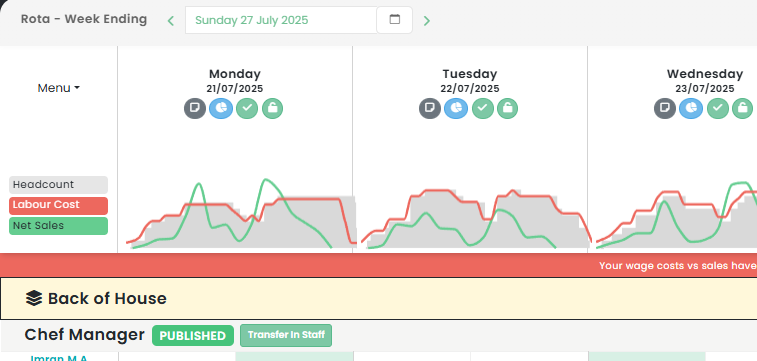Leveraging Restaurant Analytics for Data-Driven Decisions: A Comprehensive Guide to Boosting Your Food Business Performance and Profit Margins
Stay informed with industry news, tips, and practical guides for hospitality professionals.
Restaurant Analytics: Transforming the UK Hospitality Industry Through Data-Driven Decisions
The hospitality industry, particularly the food business, has seen significant evolution in recent years. One of the key factors driving this evolution is the adoption of restaurant analytics. This practice involves leveraging restaurant data to make data-driven decisions, leading to enhanced restaurant performance and management.
What is Restaurant Analytics?
Restaurant analytics is a segment of business intelligence that focuses on extracting valuable insights from restaurant data. This involves data collected from various sources such as customer analytics, menu analytics, POS analytics, and inventory management. These insights can help restaurant owners make informed decisions that can boost their profit margin, improve customer retention, and enhance their restaurant marketing strategy.
The Impact of Restaurant Analytics on Food Business
In the food service industry, understanding customer behaviour is crucial for success. Restaurant analytics plays a vital role in this by analysing dining trends and table turnover rates. This information can help restaurant owners identify peak hours and optimize their resources accordingly.
Furthermore, restaurant analytics can help identify items that are not selling well, enabling restaurants to revamp their menu and reduce food waste. With the help of food waste analytics, restaurants can significantly reduce costs and contribute to environmental sustainability.
Boosting Sales with Forecasting
Sales forecasting is another aspect where restaurant analytics can add immense value. Using historical sales data, restaurants can predict future sales with a fair degree of accuracy. This can help them in planning their inventory and staffing, thereby optimizing their resources and enhancing customer service.
Enhancing Customer Retention with Analytics
Retaining existing customers is often more cost-effective than acquiring new ones. Restaurant analytics can help in this aspect by analysing customer behaviour and preferences. Using this information, restaurants can personalize their marketing efforts and improve customer retention. For instance, they can offer tailored promotions and discounts to regular customers, thereby enhancing customer loyalty and satisfaction.
Improving Profit Margins with Restaurant Analytics
Profit margin analysis is another area where restaurant analytics can contribute significantly. By analysing the cost and revenue associated with each item on the menu, restaurants can identify their most profitable items. They can then promote these items more aggressively to enhance their profit margins.
Conclusion
In today's competitive hospitality industry, making data-driven decisions is crucial for success. Restaurant analytics offers a wealth of insights that can help restaurant owners enhance their performance and profitability. By adopting restaurant analytics, restaurants can make the most of the opportunities in the food business and stay ahead in the game.
Ready to simplify hospitality ops?
We’ve got you.
Speak with an Opsyte expert to see how we help:
- Save hours on staff scheduling and rota planning
- Automate invoice processing and financial insights
- Track live labour costs vs sales in real-time
- Get fast answers and support from real humans
- Automate your P&Ls

“Opsyte transformed our entire back office. Game changer.”
Read articles from our hospitality experts
-
Mastering the Art of Dining: Comprehensive Strategies to Improve Your Restaurant - From Management to Customer Service, Marketing and Beyond
How to Improve Your Restaurant: A Comprehensive GuideIn the highly competitive hospitality industry, improving your restaurant takes more than just a passion for food. It involves a careful balance of…...
-
Leveraging the QSR Industry: Understanding Fast Food Trends, Strategies, and Growth in the Hospitality Business
Understanding the QSR Industry in the UK Hospitality LandscapeThe Quick Service Restaurant (QSR) industry, commonly referred to as the fast food industry, is a significant component of the UK's hospitality…...
-
Maximising QSR Services: An Insight into Trends, Technology, and Growth Strategies in the Fast Food Industry
Embracing the Future of QSR Services in the UK: A Comprehensive AnalysisIn the ever-evolving landscape of the UK hospitality industry, Quick Service Restaurants (QSR services) have emerged as a pivotal…...
-
Unlocking the Secrets of Profitability: An In-depth Analysis of Average Restaurant Profit Margins in the Hospitality Industry
Understanding the Average Restaurant Profit Margin in the UK Hospitality IndustryThe restaurant industry forms a significant fraction of the UK's hospitality industry. As an industry that's intrinsically linked to consumer…...
-
Boosting Your Business: Innovative Bar Promotional Ideas and Marketing Strategies to Increase Sales and Traffic
10 Innovative Bar Promotional Ideas to Boost Your BusinessThe UK's hospitality industry is a vibrant and competitive space with bars and pubs at its heart. As a bar owner or…...
-
Maximising Efficiency in Hospitality: The Emerging Trends in Workforce Management, Scheduling, and Digital Transformation
Hospitality Workforce Management - Enhancing Efficiency in the UK Hospitality IndustryThe UK hospitality industry plays a significant role in the country's economy, contributing a substantial portion to the GDP. As…...
